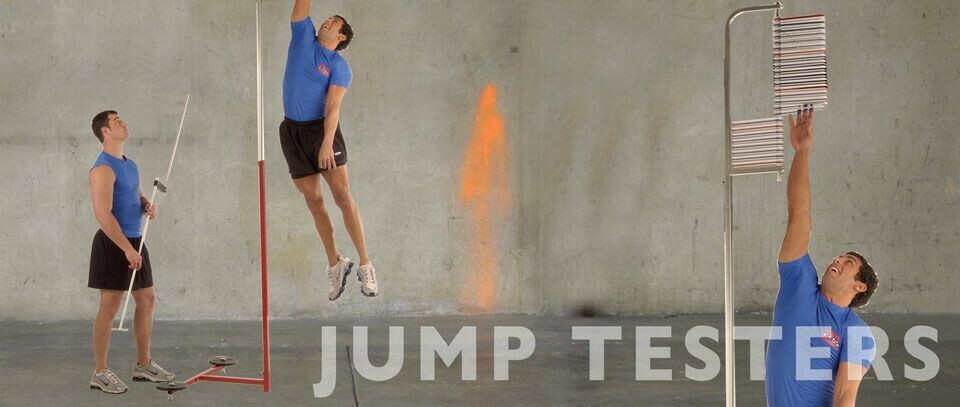
If you’re an athlete or a coach, you know that vertical leap isn’t just a number. It’s a clear indicator of an individual’s explosive power, agility, and overall athletic prowess. In sports like basketball, volleyball, and track and field, vertical leap can be a game-changer, separating the outstanding players from the rest of the pack.
What’s more, tracking the progress of your vertical leap over time is crucial. It allows you to see the tangible results of your hard work, which in turn fuels further commitment to your training. Whether you’re looking to dunk a basketball, spike a volleyball, or improve your hurdling technique, it’s the gains in your vertical leap that often translate to improved performance.
I’m going to show you why accurately measuring and tracking your leap isn’t just for bragging rights. It’s about knowing where you stand and mapping out where you want to go. This isn’t just about taking a single measurement; it’s also about setting the stage for consistent, long-term improvement that could make all the difference in your athletic career.
Establishing Your Launchpad: Setting a Baseline for Vertical Leap
I’m going to let you in on a little secret: if you want to get serious about improving your vertical leap, you need to start by setting a benchmark. That’s where the concept of a baseline comes into play. This isn’t just about knowing where you stand; it’s also about plotting a course for where you want to go.
A baseline is effectively your starting block. Don’t worry too much about where that point falls; it’s more important that it’s accurately measured. This will serve as your personal record to beat, ensuring progress tracking is as precise as your jumps. Without it, you’re essentially taking shots in the dark when aiming for improvement.
Speaking of precision, that’s exactly why athletes turn to tools like the Vertec Vertical Jump Tester. The Vertec system allows for a level of exactitude that chalk on the gym wall simply can’t match. It measures the reach of an athlete both standing and at the peak of their jump, giving a clear picture of their vertical explosiveness. And if you think this is just for the pros, guess again – it’s valuable at any level, from high school leagues right up to the big leagues.
By witnessing quantifiable advances, an athlete’s motivation can skyrocket. That’s the strategy I like to leverage. When you see those numbers inching up, even by fractions, you’re going to be hungry for more. That’s the power of having a precise baseline – it transforms a generic goal into a tangible, achievable target.
The Ascent Methods: Measuring Your Vertical Leap Accurately

Once you’ve got your baseline, it’s time to dig into the specific methods by which you can gauge your vertical leap. Let’s start with the professional tools. The Vertec Vertical Jump Tester is a classic and widely used device. It consists of a series of horizontal vanes that you swat at the peak of your jump, giving an instant visual measurement of your leap height. Here’s how to use it effectively:
Stand flat-footed under the Vertec, reach up as high as possible, and note which vane your fingertips touch – this is your standing reach. Next, from a standing position, jump as high as you can and swipe the vanes, comparing your reach to your jump height to calculate your vertical leap.
Now, for those who don’t have access to a Vertec, the Standing Approach Method can still get you solid numbers. Essentially, it involves jumping next to a wall from a standing position and marking the highest point you can reach. It’s more straightforward and doesn’t require expensive equipment.
A step up from this is the Full Approach Method. It mimics in-game jumping conditions better by incorporating a running start. This method can show your vertical leap when you’ve got the momentum from your approach – vital for sports like basketball or volleyball.
If you’re working without professional equipment, don’t fret. You can go old school with some tape and chalk: Just mark a spot on the wall, jump and tap the highest point you can. Remember, consistency is key – stick with the same method to truly track your progress over time.
Taking the Leap Forward: Next Steps After Baseline Measurement
Now that you’ve taken the leap and established your baseline vertical jump, the exciting journey towards improvement awaits. A consistent testing routine is not just a testament to your dedication; it’s a fundamental tool that will guide your training efforts and keep you aiming higher, literally.
The genuine magic happens when you start to see the results of your hard work. Those incremental gains you’ll witness over time? That’s the beauty of precision in action. Each time you measure, you’re effectively mapping out your athletic journey, ensuring each workout, each jump is contributing to your overall goal.
Also, don’t miss out on the opportunity to explore the VertShock program – a system specifically designed for those who are eager to defy gravity. Whether you’re a budding athlete or an established jumper, there’s always room to soar higher.
Remember, measuring your vertical jump isn’t a one-time event; it’s an ongoing process that reflects your growth as an athlete. Stay persistent, stay motivated, and most importantly, stay on top of your game.


Kyle,
This is such a great article. I never thought to measure how high I jump to improve my verticle leap. I am only in competition with myself, as I do not play competitively by any means.
I do enjoy testing myself to improve my game. It never hurts to better your skills, even if you’re not a professional athlete. This article gives great specific details on how to improve my verticle leap, I can easily implement this into my next practice session. I play in my driveway, so no real gym or anything, but plenty of things to measure with.
Thanks again for the great tips!
Stacie
It never hurts to better your skills, and one of the key ones is improving your vertical leap. With the proper tracking tools, you will be able to see if you are improving, at which rate you are doing so, and be able to reflect as to what training has lead to this progress.
Kyle, as a white boy who can’t jump, I appreciate your insights on measuring and tracking vertical leap go beyond just numbers. Establishing a baseline is crucial for progress, and tools like the Vertec Vertical Jump Tester offer precision. Your explanation of various testing methods, from Standing Approach to Full Approach, caters to different needs. Emphasizing consistency and the transformative power of incremental gains adds a motivational touch. The VertShock program recommendation enhances the article’s value. Overall, your guidance transforms a simple measurement into a dynamic tool for athletes at any level. #VerticalLeap #AthleticPerformance #ProgressTracking
– Dad
Haha, I am also a white boy who can’t jump…or that can barely jump. I used to spend hours upon hours doing exercises (the wrong ones) trying to get my vertical leap up to my goal of 35″, but never actually cleared 30″. I feel that if I had the tools and the knowledge that are readily available in programs (like the one mentioned above), I would have been much more equipped to achieve these goals.